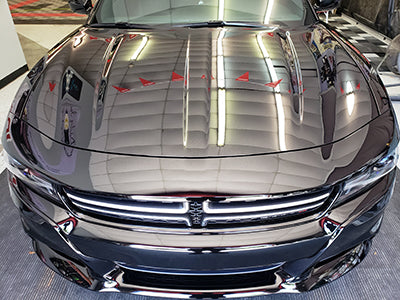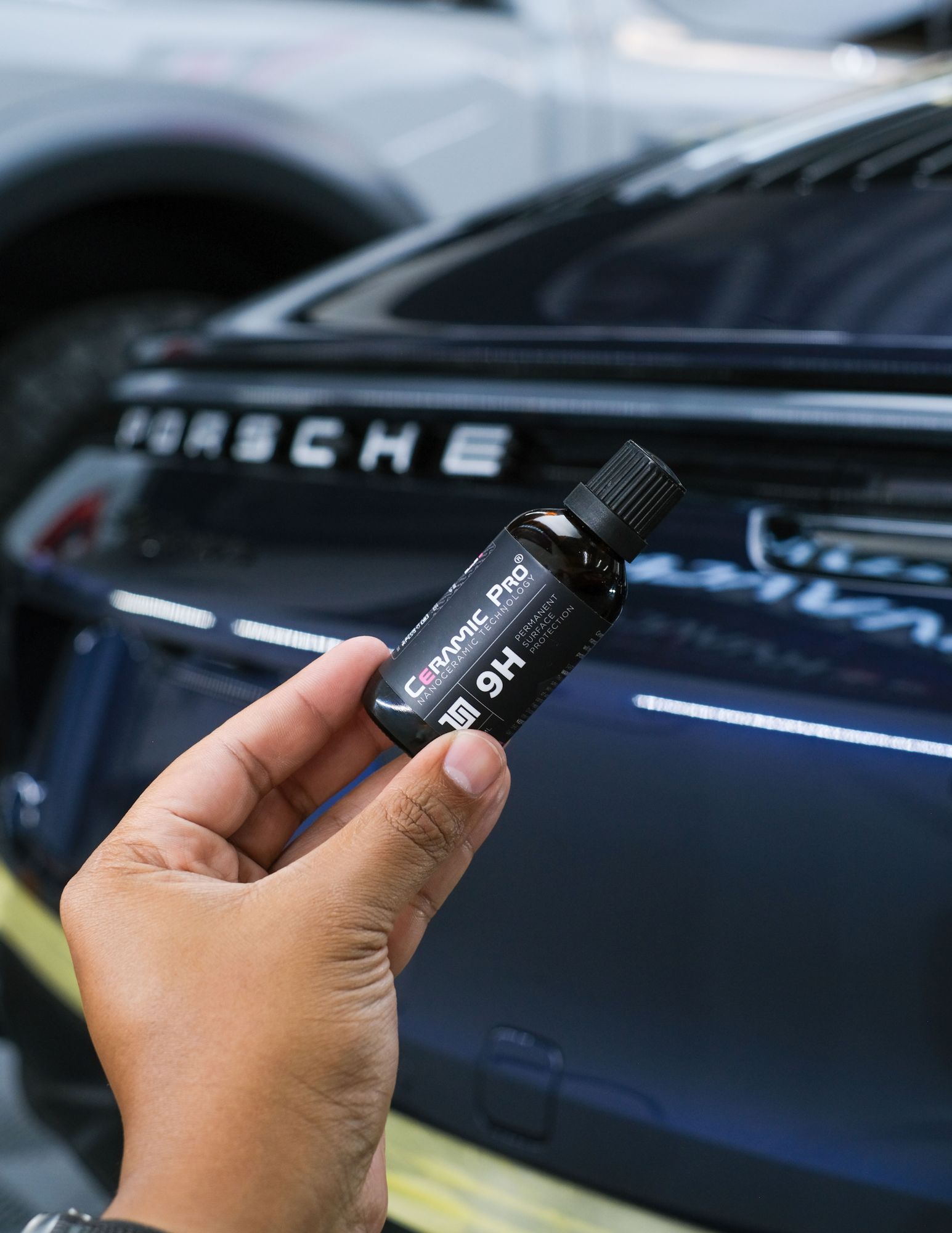Ceramic Coating vs Traditional Wax: Which Offers Better Protection?
Ceramic Coating vs Traditional Wax: Which Offers Better Protection?
Blog Article
Ceramic Finish vs. Conventional Wax: Which Supplies Much Better Long-Term Security?
The dispute in between ceramic layers and conventional wax for lorry security has garnered substantial focus among vehicle enthusiasts and specialists alike. Ceramic finishes boast exceptional long life and resistance to ecological elements, yet the complexity of their application raises inquiries about availability and functionality.
Overview of Ceramic Coating
Ceramic finishing has actually gained considerable appeal amongst automotive lovers and detailers alike due to its innovative protective top qualities. This cutting-edge technology is designed to produce a long lasting, hydrophobic shield over a car's paint surface, dramatically improving its resistance to ecological pollutants such as dust, UV rays, and chemical stains. Unlike conventional wax, which gives a short-lived layer of security, ceramic finishings bond at a molecular level with the paint, offering lasting resilience-- usually extending beyond 2 years with proper maintenance.
The application procedure entails meticulous prep work of the car's surface area, including cleaning and polishing to make certain optimum adhesion. As soon as applied, the layer cures to create a robust layer that not only includes deepness and gloss to the paint yet likewise simplifies maintenance. With its hydrophobic residential properties, ceramic coating enables water and dust to glide off even more quickly, lowering the frequency of washes and minimizing the threat of swirl marks.
Additionally, ceramic finishes are offered in different solutions, enabling individuals to pick items tailored to their specific requirements and preferences. Overall, ceramic coating stands for a substantial development in paint security technology, supplying exceptional efficiency compared to conventional alternatives.
Summary of Standard Wax
Generally pertained to as a staple in auto treatment, wax works as a popular choice for those looking for a simple method to improve and secure their automobile's paint - ceramic coating. Automotive wax commonly makes up all-natural active ingredients, such as carnauba, or synthetic substances, created to produce a protective layer on the surface area of the paint. This layer not only boosts the automobile's gloss and radiate but additionally supplies a barrier versus environmental impurities
The application of wax is typically easy to use, making it accessible for both professionals and DIY enthusiasts. It can be used by hand or device, permitting versatility in the describing process. As soon as applied, wax needs a curing duration, after which it hardens to create a safety shell. Wax is also recognized for its ability to repel water, advertising a beading effect that helps in the avoidance of water spots and rust.
Nonetheless, while wax is effective for enhancing the aesthetic allure of a lorry, it is very important to note that the protection it provides may demand much more frequent reapplication compared to different products, such as ceramic coverings. In general, traditional wax remains a preferred choice for those focusing on convenience of usage and instant visual improvement.
Durability and Longevity Comparison
While both ceramic coatings and standard wax deal protective advantages for automotive paint, their sturdiness and long life vary considerably. Typical wax, typically made from natural carnauba or artificial polymers, generally supplies a protective layer that lasts around 3 to six months. This fairly short life expectancy necessitates normal reapplication to maintain ideal defense.
In contrast, ceramic coverings are crafted from innovative nanotechnology, creating a covalent bond with the paint surface. This causes a robust, hydrophobic layer that can sustain for 2 to 5 years, depending upon the product and ecological conditions. The remarkable resilience of ceramic finishings is attributed to their chemical framework, which offers enhanced resistance to scratches, UV rays, and oxidation.

Protection Versus Ecological Factors
Protecting a car's paint from ecological factors is critical for maintaining its look and value in time. Automobiles are frequently exposed to a range of aspects, including UV rays, bird droppings, tree sap, acid rainfall, and road gunk, all of which can endanger the honesty of the paintwork.
Ceramic finishings provide a durable defense versus these environmental assailants. Unlike standard wax, which can break down quickly under UV exposure, ceramic finishes develop a long lasting, hydrophobic layer that withstands the unsafe effects of sunlight and environmental toxins. This sophisticated innovation produces a chemical bond with the lorry's surface area, supplying exceptional protection that lasts for many years, also in severe problems.
Standard wax, while easier to use, usually needs regular reapplication and uses limited resistance to pollutants and UV rays. In time, it can damage down, leaving the paint susceptible to scrapes and oxidation. In contrast, ceramic finishings preserve their protective qualities much longer, significantly minimizing the danger of paint damages and making sure that the car maintains its visual charm. Consequently, ceramic coverings are significantly see page identified as the exceptional choice for long-lasting defense versus ecological factors.
Application and Upkeep Distinctions
The techniques of application and succeeding maintenance for ceramic layers and standard wax vary considerably, influencing the total user experience and efficiency of each product. Ceramic coverings need an even more intricate application procedure, generally entailing surface preparation that includes washing, decontaminating, and polishing the vehicle. As soon as the surface prepares, the ceramic covering is used in a regulated atmosphere, commonly needing expert competence to make sure correct curing and bonding to the paint.

While both items enhance vehicle appearance, the longer-lasting protection used by ceramic finishes may warrant their first financial investment, regardless of the more demanding application procedure. Alternatively, traditional wax stays a popular selection for those looking for a less complex, albeit short-term, remedy.

Final Thought
To conclude, ceramic coatings show significant advantages over conventional wax in terms of longevity and ecological security. With a life-span prolonging two to 5 years and remarkable resistance to UV rays, dust, and chemical spots, ceramic coverings supply a more go efficient remedy for long-term car upkeep. Although the application process may require professional knowledge, the resulting cost financial savings and minimized frequency of reapplication highlight the value of ceramic coverings for those looking for ideal car security.
The discussion in between ceramic finishings and typical wax for lorry defense has actually garnered substantial interest amongst automotive fanatics and professionals alike. Unlike typical wax, which gives a momentary layer of security, ceramic finishings bond at a molecular level with the paint, providing lasting durability-- frequently expanding past two years with correct upkeep.
While both ceramic coverings and conventional wax deal protective advantages for automobile paint, their sturdiness and durability vary substantially. For automobile fanatics looking for long-term defense, ceramic layers present a compelling benefit over standard wax products.
In verdict, ceramic finishings show substantial benefits over traditional wax in why not find out more terms of resilience and ecological security.
Report this page